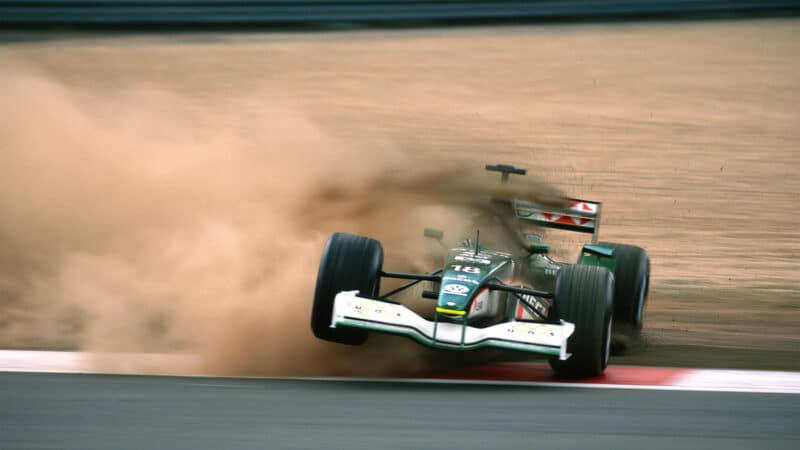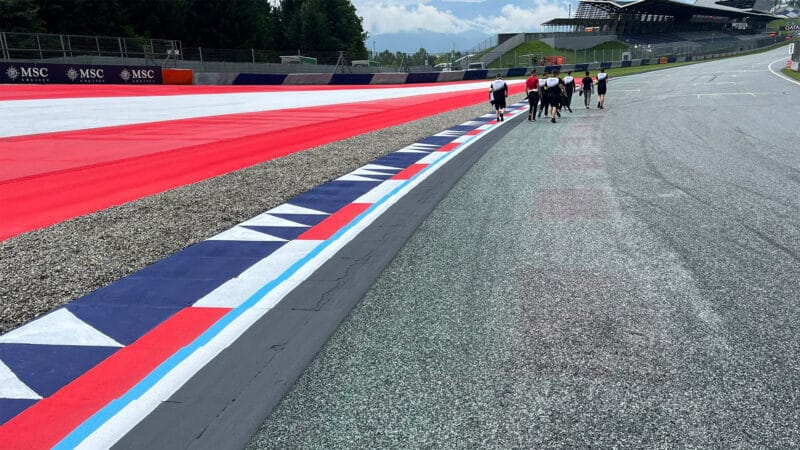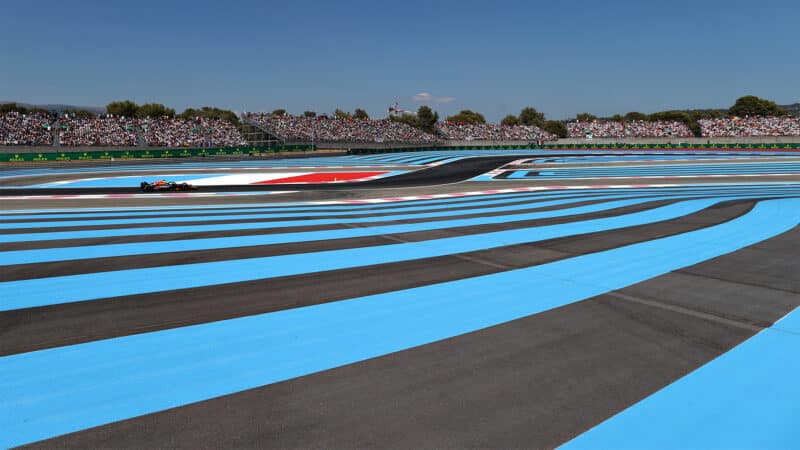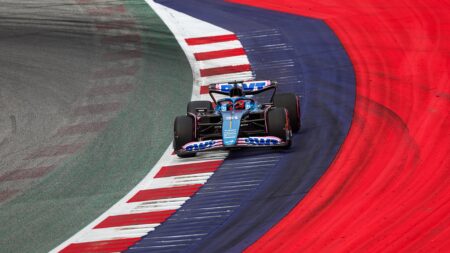With asphalt now covering both the racing surface and the areas beyond it, drivers have been able to drive to the very limits of circuits, without the risk of being caught in a gravel trap.
“When you’re trying to drive and you’re trying to look where the white line is relative to your tyre and kind of guess, it’s just something we shouldn’t have to think about,” said Lando Norris. “So it’s more down to the driver just taking the risk and committing to corners.”
With drivers often placing wheels within millimetres of the boundary, it has also become very difficult for race stewards to police, with investigations sometimes taking palce after a qualifying session or race.
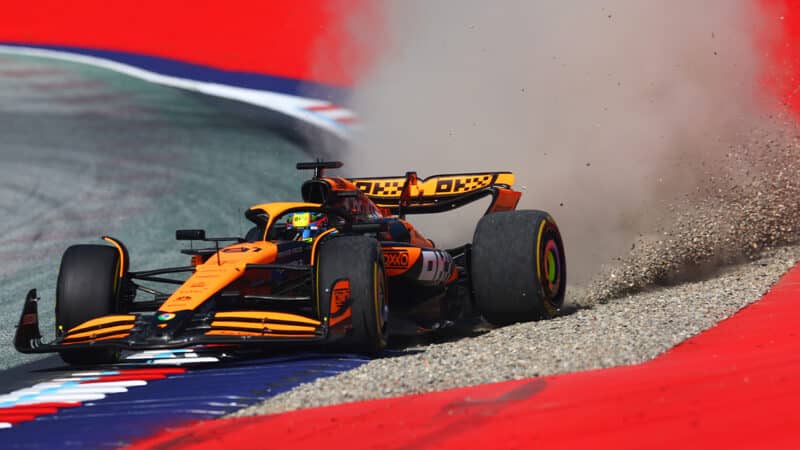
Piastri is caught by a new Red Bull Ring gravel trap
Clive Rose/Getty Images
At the 2021 Abu Dhabi Grand Prix, Lewis Hamilton cut the Turn 6/7 chicane after he was “pushed” off the circuit by Max Verstappen, who was attempting to pass. As the Dutchman kept all four wheels on the racing surface, Red Bull argued that Hamilton should have been ordered to give up the lead of the race, but was instead instructed to give up the entire advantage gap he had gained by breaching the limits of the track.
More recently in 2024, Kevin Magnussen continuously and purposely used the tarmac run-offs at the Miami Autodrome to protect a point-scoring position for his team-mate Nico Hülkenberg from those behind him. The Dane received over 30 seconds-worth of penalties for his “unsporting” actions and his tactics angered many of the teams that became stuck behind him.
Why have gravel traps returned to F1?
While gravel traps have proved unreliable in preventing crashes, they’re still effective in slowing cars down — especially those which are aiming to gain an advantage.
Turns 9 and 10 at the Red Bull Ring are both common sites for track limit breaches as drivers aim to keep their foot to the floor in a bid to gain precious lap time through the final corners of the lap. But the addition of temporary gravel strips — which lurk just beyond the traditional and white kerbing — should deter most from taking an extra wide line and risk losing grip via a trip through the stones.
Beyond both corners still remains a large tarmac run-off, and the gravel strip will be removed so that the circuit can safely host motorcycle racing.
